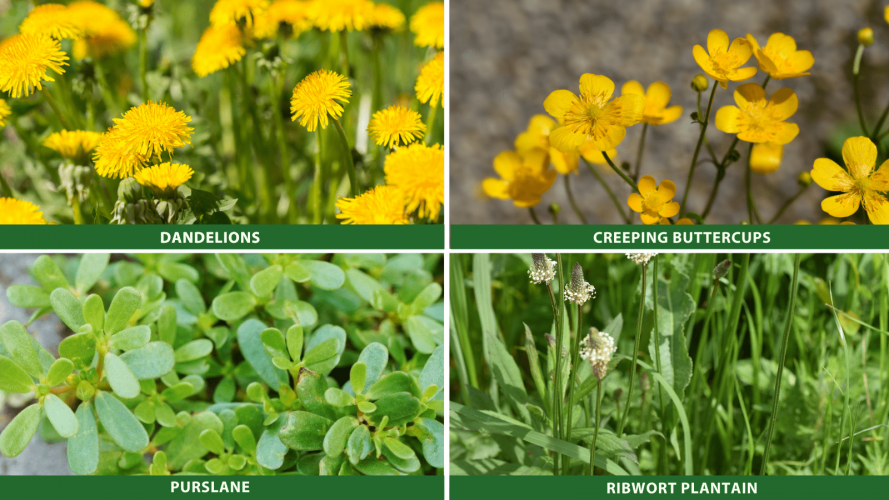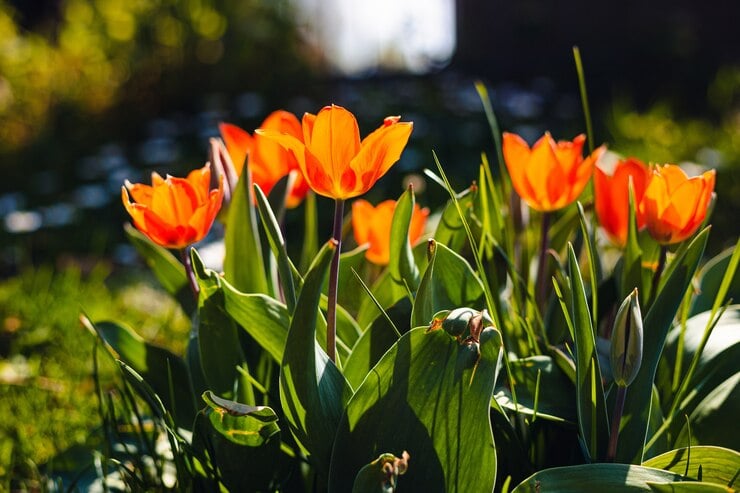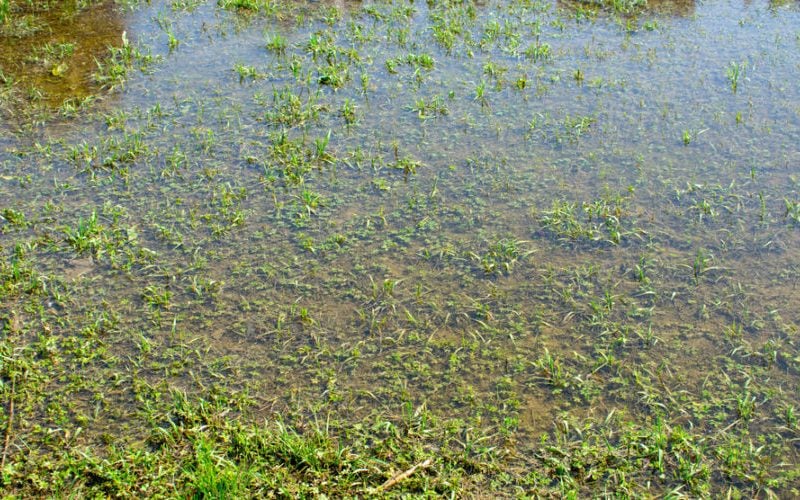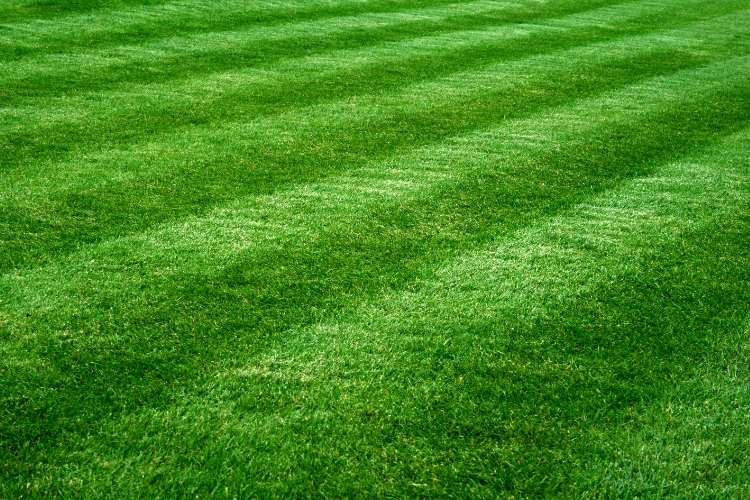Identifying why your garden lawn is not at its best is vital. Otherwise you risk spending time, effort, and money on incorrect, ineffective, and potentially damaging treatments. In this article you will learn about some of the most common lawn problems you might experience. Our experts will be able to diagnose the exact problem and also recommend the appropriate course of action for your specific needs. If you tackle the most common lawn problems, you will not only have a healthy lawn that looks great, but it will also be more resilient to weeds, bugs, and fungus.
Moss
Moss is one of the most common and easily identifiable lawn issues. It forms dense green clumps or mats, often in damp or shady locations, and usually where grass is thin. Moss competes against grass for growing space and without proper lawn care, it will win. Its presence can sometimes suggest underlying lawn issues.
Weeds
Weeds are a year-round nuisance, but they can be a particular problem in early summer. Although some people may find these ‘flowers’ pretty, you don’t want to let them take over. A few of the common culprits are dandelions, creeping buttercups, ribwort plantain, purslane. There is rarely one solution for all weeds as both the cause and treatment can vary.
Pests
Two of the most common garden bugs, feed on the grass roots. Their presence may become evident from yellowish patches in the lawn.
- Chafer Grubsare the soil-dwelling larvae of the Chafer Beetles. You may spot Chafer Grubs under loose turf and soil. They are larvae with white, curved bodies and light brown heads. If you look closely, you will spot several pairs of legs towards the head.
- Leather Jacketsare the larvae of Crane Flies, commonly known as Daddy Long Legs. The larvae are attractive meals to larger animals who may dig up the ground looking for them, further wrecking your lawn. By lifting a small section of the turf, you can see the leatherjackets in the affected layers of soil. During wet periods, the water forces them up onto the surface making them visible.
Fungus
Fungus is extremely common in lawns across the country, and although most are harmless, a few can cause patchy grass, stunted growth, the development of brown spots or rings and slimy patches.
Some of the most damaging garden fungi that you need to be aware of include: Anthracnose, rust and leaf spot.
Red Thread
Identified by reddish-brown patches of decaying grass it has the appearance of fine red needles sticking out from blades of grass and may have a ragged appearance. In severe cases, the grass may look scorched or yellowed in patches. To prevent Red Thread, we recommend maintaining sufficient soil fertility, avoid over-watering and provide good soil drainage.
Lawn Thatch
Lawn thatch is the layer of mainly dead turf grass tissue lying between the green vegetation of the grass above and the root system and soil below. A layer of thatch becomes a problem when 2-3cm thick. The process of getting rid of mild cases is known as ‘scarifying’. A thick layer of thatch promotes diseases and insect infestations. Areas of your lawn plagued by an especially thick layer of thatch will develop a spongy consistency.
Dry Lawn
During dry weather, grass can suffer from drought stress. This is amplified in hot or windy conditions. The lawn may become pale green, yellow, or brownish and begin to look patchy. Normally watering the area over a week or two will see improvements, but if the soil remains dry to the touch, then your lawn could have Dry patch.
How can Greensleeves help?
Firstly, if you are concerned that your lawn is suffering from any of the above problems despite your best efforts at prevention, contact your local Greensleeves Lawn Treatment Expert. They can complete a free lawn assessment and recommend the best course of action. Secondly, contact our helpful team either by calling 0808 100 1413 or completing the form on thecontact us page





